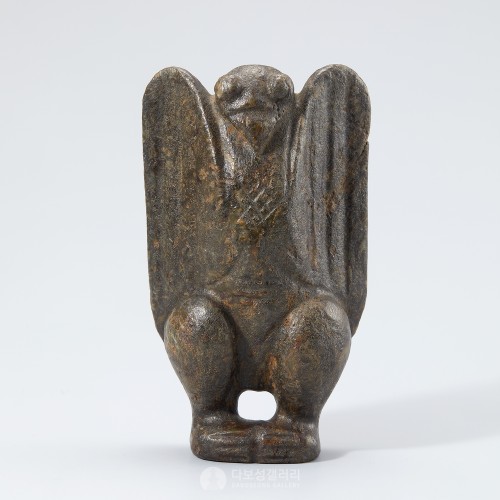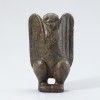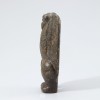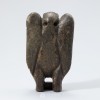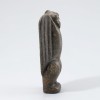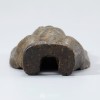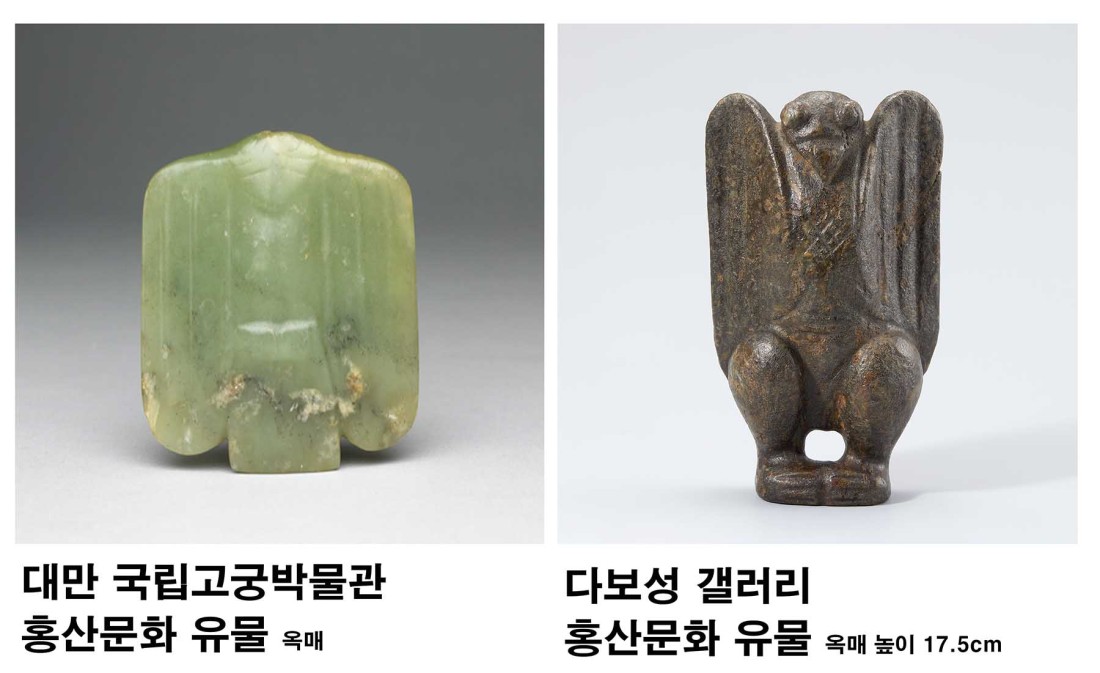본문
직사각형에 가까운 접은 날개에서 기세가 엿보이는 옥매[玉鷹]입니다. 매는 빠르게 비행해 토끼나 쥐와 같은 작은 동물을 사냥하는 습성이 있어 용맹과 벽사(辟邪)를 상징합니다. 가슴 부분은 볼록 튀어나왔고 다리도 굳세게 표현되었습니다. 옥매와 같은 옥기는 홍산문화 시대에 주로 제작되었는데, 옥인(玉人), 옥돼지(玉豬), 옥매(玉鷹), 옥룡(玉龍) 등이 대표적입니다.
홍산문화는 기원전 4700년부터 기원전 2900년 사이에 중화인민공화국 내몽골과 랴오닝성에 존재했던 신석기 시대의 문화입니다. 명칭은 옥기(玉器) 등 신석기시대 유물이 다량으로 출토된 내몽골자치구의 츠펑시(赤峯市)에 있는 붉은 산[紅山]에서 유래했습니다. 이 시대의 뉘우허량(牛河梁) 유적의 여신묘(女神墓)에서는 눈을 비취로 만든 여신상(女神像)을 비롯해 곰·용·거북·멧돼지 등의 동물 모양의 옥기가 다량으로 발견되었습니다. 홍산문화는 문자와 청동기가 없던 시대임에도 국가 단계로 보고 있습니다. 그 이유는 다량의 옥기가 출토되었기 때문이며, 이에 홍산문화를 ‘옥기 시대’로 규정하기도 합니다.
━━━━━
该玉鹰近似长方形,翅膀的边缘向上拱起。鹰具有快速飞行、猎杀兔子、老鼠等小动物的习性,象征着勇猛和辟邪。胸部突出,腿部也很结实。玉鹰等玉器主要制造于红山文化时代,玉人、玉猪、玉鹰、玉龙等最具有代表性。
红山文化是在公元前4700年到公元前2900年间存在于中国内蒙古和辽宁省的新石器时代的文化。名称来源于出土大量玉器等新石器时代文物的内蒙古自治区赤峰市的红山。在该时代的牛河梁遗址的女神墓中,发现了大量以翡翠做成眼睛的女神像、熊、龙、龟、野猪等动物模样的玉器。红山文化在没有文字和青铜器的时代,但被看作是国家阶段的理由正是因为出土了大量玉器,因此红山文化也被定义为“玉器时代”。
A jade falcon figure with lively folded wings. The Falcon symbolizes bravery and defeat of evil spirits for its habit of hunting small beasts, such as rabbits or rats, by rapid flight. The chest is protruding, and the legs are firmly depicted. Jade wares such as falcons, pigs, humans, and dragons were mainly produced in Hongshan culture.
The Hongshan culture was a Neolithic culture stretching from Inner Mongolia to Liaoning and dated from about 4700 to 2900 BC. The culture is named after Hongshan(红山), a site in Hongshan District, Chifeng, where many Neolithic artifacts, such as jade ware, have been excavated. In China, Hongshan culture is defined as a "Liao River(遼河) Civilization" along with other Neolithic cultures such as Xinglongwa culture, Zhaobaogou culture, and Xinle culture. Hunting and gathering were the primary means of food supply, and basic cultivation and domestication of cattle also started in the late Hongshan. A clay goddess head with jade inlaid eyes was discovered in "the Goddess Temple" at Niuheliang, along with many animal jades such as bears, dragons, turtles, wild boars, and so on. The tools for cutting jades were found, which proves that a group of craftsmen made jade ware here. From the historical perspective, the invention of bronze ware and writing is the most convincing evidence of entering nation-states. However, Hongshan culture is regarded as a nation even without bronze ware and a writing system because of many jade wares excavated from the site, which made Hongshan culture defined as the 'Jade Age.'
